February 16, 2013, Saturday — Last Meetings, and Looking Forward
One Sunday during Lent is referred to as Laetare (“Rejoice!”) Sunday.
Laetare Sunday this year will fall on March 10.
That is the day Vatican officials now say may be the day that the Conclave to elect the new Pope may begin.
(Here below is the first line of the Gregorian chant introit from which Laetare Sunday gets its name; below that are the Latin and English of the introit.)
“Laetare Jerusalem: et conventum facite omnes qui diligitis eam: gaudete cum laetitia, qui in tristitia fuistis: ut exsultetis,et satiemini ab uberibus consolationis vestrae. Psalm Laetatus sum in his quae dicta sunt mihi: in domum Domini ibimus.”
“Rejoice, O Jerusalem: and come together all you that love her: rejoice with joy, you that have been in sorrow: that you may exult, and be filled from the breasts of your consolation. Psalm: I rejoiced when they said to me: ‘we shall go to up to the house of the Lord!'”
If the Pope is elected relatively quickly, his first Mass and installation might be on the following Sunday, March 17, St. Patrick’s Day, or possibly on Tuesday, March 19, the Feast of St. Joseph, spouse of the Blessed Virgin Mary.
Angelus Tomorrow
Tomorrow at noon, as many as 150,000 people are expected to come to St. Peter’s Square for the Pope’s Angelus and blessing.
From tomorrow evening, the Vatican will close for a week, and the Curia will listen to Italian Cardinal Gianfranco Ravasi (photo), a biblical scholar and the head of the Vatican’s Council for Culture. Ravasi will lead the Curia in a series of spiritual reflections known as Lenten Spiritual Exercises. Pope Benedict is expected to attend every session. (Pope Benedict is known to like and respect Ravasi; last year, Benedict chose Ravasi to preach these exercises; whether the Pope knew then that he would be resigning now, is not clear; but Ravasi’s week-long appearance before the Roman Curia just before the upcoming March Conclave is thought to make his possible candidacy as the choice to be the next Pope more viable; at the very least, Ravasi will enter the Conclave as someone the Curial cardinals — along with Pope Benedict himself — will have just spent a week listening to, so they will be able to judge well his his scholarship and teaching ability and possible effectiveness as a Pope).
Cardinals Already Gathering
Some cardinals have already come to Rome, five days after Pope Benedicts’s surprise announcement on Monday, February 11, that he would step down from his office. More will gather this coming week and during the first days of next week, leading up to February 28, the date the Pope will step down.
The Pope is now expected to have his last public general audience on Wednesday, February 27, and then to receive his cardinals on the morning of February 28. Many are expecting the Pope to us those two occasions — the last General Audience and the meeting with cardinals the following day — to give some indication of his hopes and wishes for the Church, the Conclave, and, by implication, for the next Pope and papacy. So those two talks will be closely watched.
The Pope will leave the Vatican at about 5 p.m. on February 28, a Thursday, and fly by helicopter to spend two months at Castel Gandolfo, outside of Rome. He will cease to be Pope at 8 p.m. that evening.
It is now expected that many, of not all, of the 117 cardinals who will vote for the next Pope will already be here in Rome by that day. (It had been thought that the cardinals would be invited to gather only in the days after February 28, when the See of Peter is actually vacant; but it is now thought that they will come to Rome earlier. Still, there is not yet clarity on this point.)
The cardinals will meet and discuss things among themselves for a number of days under the direction of Cardinal Tarciso Bertone, the present Secretary of State, who is also the “Camerlengo” in charge of the upcoming Conclave.
Then they will go into the Conclave.
That moment is now expected, not on March 15, but on March 10. Again, there is not yet complete clarity on this schedule.
Today’s Meetings
The Pope seemed calm and rested today in his final meetings before the Spiritual Exercises.
For his final “diplomatic” appointment as Pope, he received the president of Guatemala.
Father Federico Lombardi, director of the Press Office, who was present, asked the Pope if he could express to the journalists the Pope’s gratitude for their work. “Ma certamente” (“But certainly”), Benedict replied.
During the coming week, the Pope will meet only once each day with his secretary, Archbishop Georg Gaenswein, Prefect of the Pontifical Household, to sign documents.
The Pope with Scola
Pope Benedict today also received his last group of Italian bishops, coming from the region of Milan, led by Milan’s archbishop, Cardinal Angelo Scola, 71. Because he was Patriatch of Venice before becoming archbishop of Milan, and because Venice produced two Pope of the last five (John XXIII and John Paul I), and because Milan produced another Pope (Paul VI), Scola is regarded as one of the leading Italian candidates to become Pope. (I remember meeting him when he was a young monsignor and came to visit us in the offices of 30 Giorni magazine; I remember him as being joyful, but very intelligent, serious and thoughtful in those days. Scola was close to the journalists of the Communion and Liberation movement, who produced the magazine, as was Cardinal Ratzinger also at that time.)

“Il Papa ha insistito moltissimo, ma e’ il tema di questo grande pontificato, sulla gioia della fede che era stata sottolineata anche da tutti i vescovi che sono intervenuti nel dialogo col Santo Padre” (“The Pope emphasized very much — but it is the theme of this great pontificate — the joy of the faith, which was also underlined by all of the bishops who spoke during the conversation with the Holy Father”), Scola told Vatican Radio.
“We were all deeply moved,” Scola said. (“Tutti eravamo molto commossi”).
“We noted at the end that we felt the responsibility of being the last bishops to be received by him in ad limina visits, and he said to us: ‘This responsibility means that you must become a light for all,” Scola said. (“Noi abbiamo ricordato alla fine che sentiamo la responsabilita’ di essere stati gli ultimi ricevuti nella visita ad Limina, e lui ci ha detto: ‘questa responsabilita’ significa che dovete diventare una luce per tutti'”).
“We hope we will be capable of being that,” Scola concluded. (“Speriamo di esserne capaci.)
Cardinal Dionigi Tettamanzi, emeritus archbishop of Milan, 78, was also part of the group received by the Pope.
It is generally believed that, if an Italian is to issue from this Conclave as Pope, the Italian cardinals, who will have 28 votes out of 117, or nearly 25%, will have to remain united. However, as one Roman friend put it to me, “this hase never happened, and it will not happen.”
If the Italians were to “break precedent,” however, and find a way to be united, it is not unlikely that they could gather another 12 or 14 votes from other countries, and form a formidable group of about 40 votes. Such a group could block the election of any other candidate, as the next Pope must receive a 2/3s majority, or 78 votes. If 40 votes are withheld from any candidate, the most that candidate could receive would be 77. Any successful candidate would then have to gain the approval of this compact group — or the group would have to lose its compactness.
The Italian journalist Salvatore Izzo wrote today: “E’ possibile che questa volta i 28 cardinali cerchino di compattarsi e cio’ favorirebbe l’altro possibile candidato, il presidente della Cei Angelo Bagnasco, universalmente stimato e meno connotato di Scola, che ha un passato in Comunione e Liberazione” (“It is possible that in this conclave the 28 (Italian) cardinals may seek to create a compact group and this would favor the other possible (Italian) candidate, the president of the Italian bishops’ conference, Angelo Bagnasco, univeraally respected and having less ‘baggage’ than Scola, who has a past in Communion and Liberation.”) [Note: The reason a “past with Communion and Liberation” should be in some way a “negative” for Scola is that Communion and Liberation, once one of the most promising of the “New Movements” in the Church in the 1960s, 1970s and 1980s, filled with energy and Christian commitment, increasingly became deeply involved with Italian politics and, perhaps inevitably, the compromises that seem to be required by involvement with the “art of compromise” that politics have been defined as being.)
The Pope and His Butler
Pope Benedict has given new insight into his reaction to the “Vatileaks” scandal.
The insights came in an interview some weeks ago to the German writer Peter Seewald, who did two interview-books with him in the 1990s and another during the first years of the pontificate. Parts of the interview were published today in the German magazine Focus.
Pope Benedict XVI told Seewald that he found the conduct of his butler, Paolo Gabriele, who was convicted and jailed for stealing confidential papers from the Vatican, “incomprehensible,” it emerged today.
“La psicologia di Paolo Gabriele mi è incomprensibile” (“The psychology of Paolo Gabriele is incomprehensible to me”), he was quoted as saying.
Giacomo Galeazzi reported today on Vatican Insider that the Curia has prepared a document that will prevent Gabriele from ever revealing more about what he knows of the Vatican secret documents that he photocopied. He reported that Gabriele will sign the document in “the next few days.”
For his part, Gabriele is “molto turbato, addolorato e dispiaciuto per le dimissioni del Papa” (“very upset, saddened and unhappy over the resignation of the Pope”), Italian media is reporting based on “sources close to the ex-butler of the Pope.”
These reports are also saying that, after pardoning Gabriele, Pope Benedict continued to have contacts with Gabriele, showing his paternal affection for Gabriele and his family (“Benedetto XVI ha continuato ad avere contatti e rapporti con il suo ex maggiordomo Paolo Gabriele, dimostrando a lui e alla sua famiglia interessamento e grande affetto paterno”).
Vatican insiders have said the Pope, 85, was deeply hurt by the betrayal of his trust by a key member of his inner circle and have speculated that it was one of the factors that prompted his resignation announcement on Monday.
But the Pontiff appeared to downplay the impact of the scandal, saying: “It is not as though I were somehow falling into a kind of desperation or world-weariness.”
Gianmaria Vian, editor of the Osservatore Romano, the Vatican newspaper, has said that the Pope first started considering the option of resigning as far back as March last year, during a trip to Mexico, particularly after he had a fall in which he banged his head.
He had reportedly made up his mind to step aside by the time he went on an official visit to Lebanon in September. In the conversation with Seewald, he said his strength was ebbing.
The German journalist asked him what more people could expect of his papacy and he replied: “From me? Not much more. I’m an old man and my strength is diminishing. And I think what I have done is enough.”
Although it was not widely noted at the time, Benedict prepared the way for his decision an an interview with Seewald in 2010, published as Light of the World.
“If a pope clearly realizes that he is no longer physically, psychologically and spiritually capable of handling the duties of his office, then he has a right, and under some circumstances, also an obligation to resign,” the book quoted the Pontiff as saying.
Last Mass
Paul Badde, a German writer for Die Welt who has also written for Inside the Vatican, and who is a friend also of Seewald, has just published a moving account of Pope Benedict’s last public Mass on Ash Wednesday.
Badde, who has spent the past 10 years reporting from Rome, first on the end of the pontificate of John Paul II and now on the pontificate of Pope Benedict, his fellow countryman whom he also has known personally for many years, even before he was Pope, was able to receive communion from Pope Benedict at that last Mass.
“Er schaut mir in die Augen,” Badde writes. “Die goldene Patene, die ein Diakon zwischen uns hält, spiegelt spielendes Licht aus der Kuppel zurück in seine Züge. Er ist Jahrhunderte alt. Seine Augen erinnern mich an die Augen meiner Mutter. ‘Corpus Christi,’ sagt er, als ich in die Knie gehe. ‘Amen,’ antworte ich… (“He looks into my eyes. The golden paten that a deacon holds between us, reflects the play of light from the cupola above and from his vestments. He is centuries old. His eyes remind me of the eyes of my mother. ‘Body of Christ,’ he says, as I drop to me knees. ‘Amen,’ I answer…”)
It was the Pope’s last Mass from the high altar above the tomb of St. Peter.
Here is a link to the complete article in the original German. Link: https://kath.net/detail.php?id=40090
A Cloistered Nun Speaks
One of the seven cloistered nuns who until last October lived in the Mater Ecclesiae (“Mother of the Church”) convent in the Vatican gardens, where Pope Benedict will live after his two months at Castel Gandolfo, has given an interesting interview to Vatican Radio.
The nuns were all Spanish except for one Italian, Sister Maria Francesca. This is what she had to say about living in the Vatican Gardens:
“E’ stata un’esperienza unica, ed è un’esperienza di quelle per cui uno comincia a misurare la vita da ‘prima’ di questo e ‘dopo’ questo. Quello che l’ha caratterizzata è stata essenzialmente la presenza del Santo Padre, cioè questa vita data e offerta per lui con una vicinanza, tra l’altro, fisica: la posizione del monastero è dentro i Giardini Vaticani. Proprio questa vicinanza implicava dei contatti con il Santo Padre ed il primo, il più importante in assoluto, è quello della preghiera. Noi eravamo lì essenzialmente per lui, per la Chiesa, per i suoi collaboratori della Curia. Tutte le mattine, aprendo le finestre della nostra casa, vedevamo il Palazzo Apostolico ed era un modo per mandare la preghiera quasi ‘fisicamente’ verso di lui.” (“It was a unique experience, one of those experiences that one measures one’s life by, ‘before’ and ‘after’ the experience. What characterized it was essentially the presence of the Holy Father, that is, this life given and offered for him with a nearness which was, among other things, physical: the position of the convent is inside the Vatican Gardens. Precisely this nearness implied contacts with the Holy Father, and the first, the most important of all, was that of prayer. We were there essentially for him, for the Church, for his co-workers of the Curia. Every morning, opening the windows of our house, we saw the Apostolic Palace and it was a way to send our prayer ‘physically’ toward him.’)
She said she met the Pope only two times, once on December 14, 2010, on the 400th anniversary of her order’s founding, and on October 14, 2012, a week before leaving the Vatican. On that last occasion, they met the Pope in his apartment.
What struck her, she said, was his very great capacity to be “present” and “open” to each person in front of him.
Asked what message she would like to communicate to the Pope, she said: “We love him very much. We loved him very much, and we love him very much.” (“Lo amiamo tanto. Lo abbiamo amato tanto e lo amiamo tanto.”)




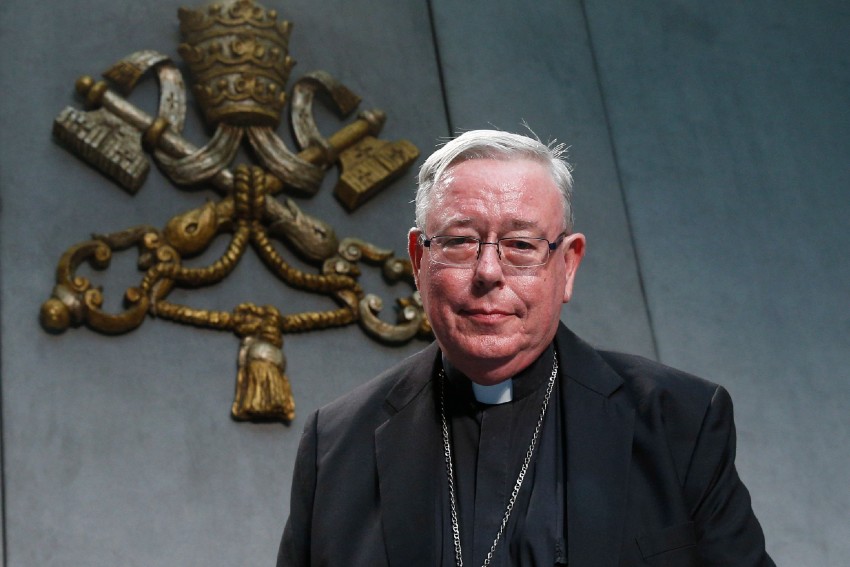
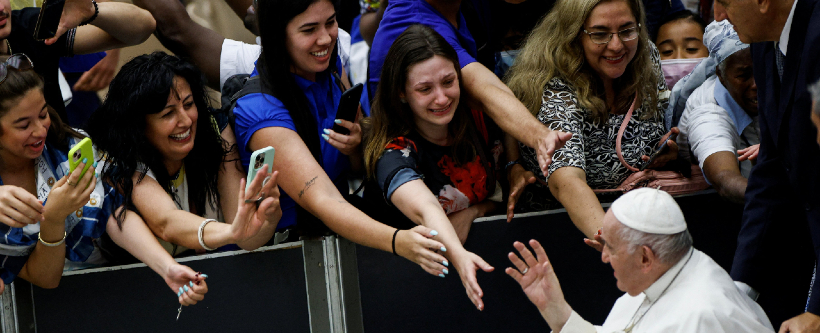
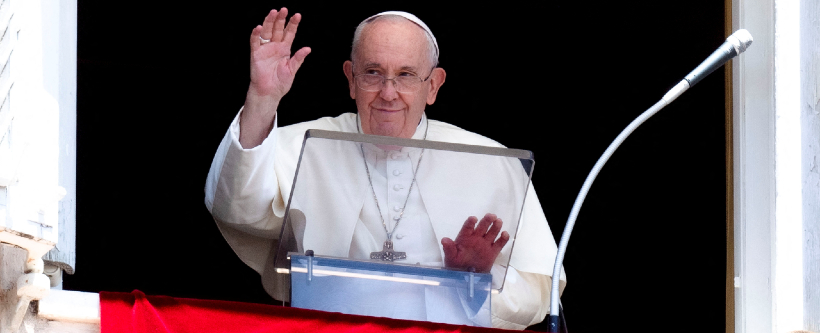
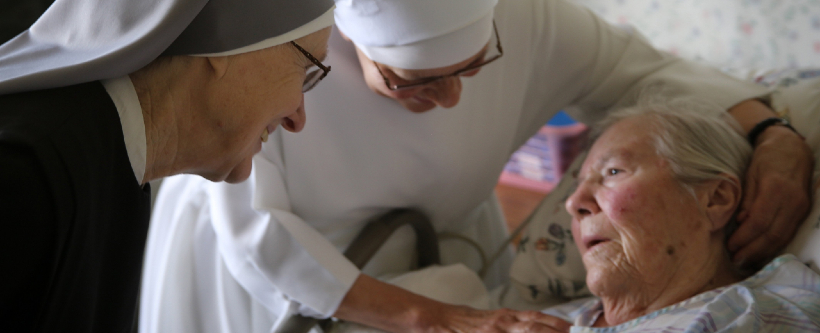
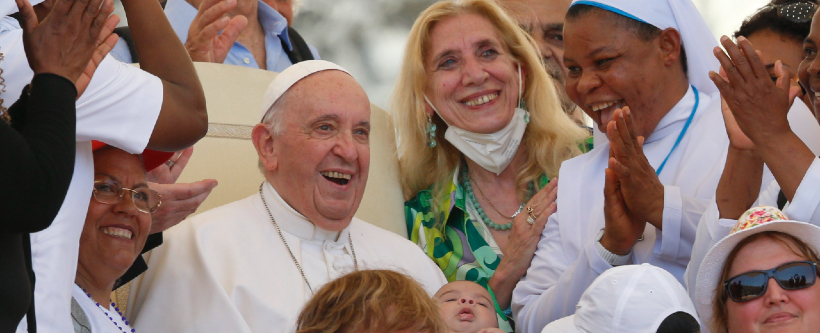
Facebook Comments